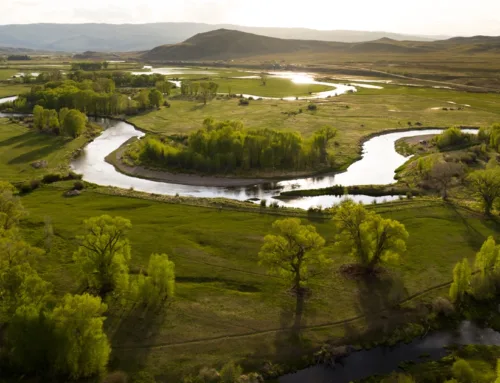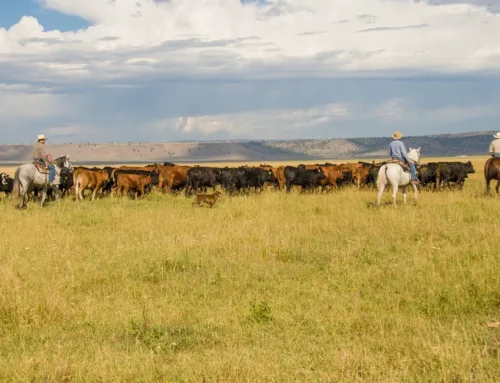Water Wars
Water Wars
By Joe Nick Patoski
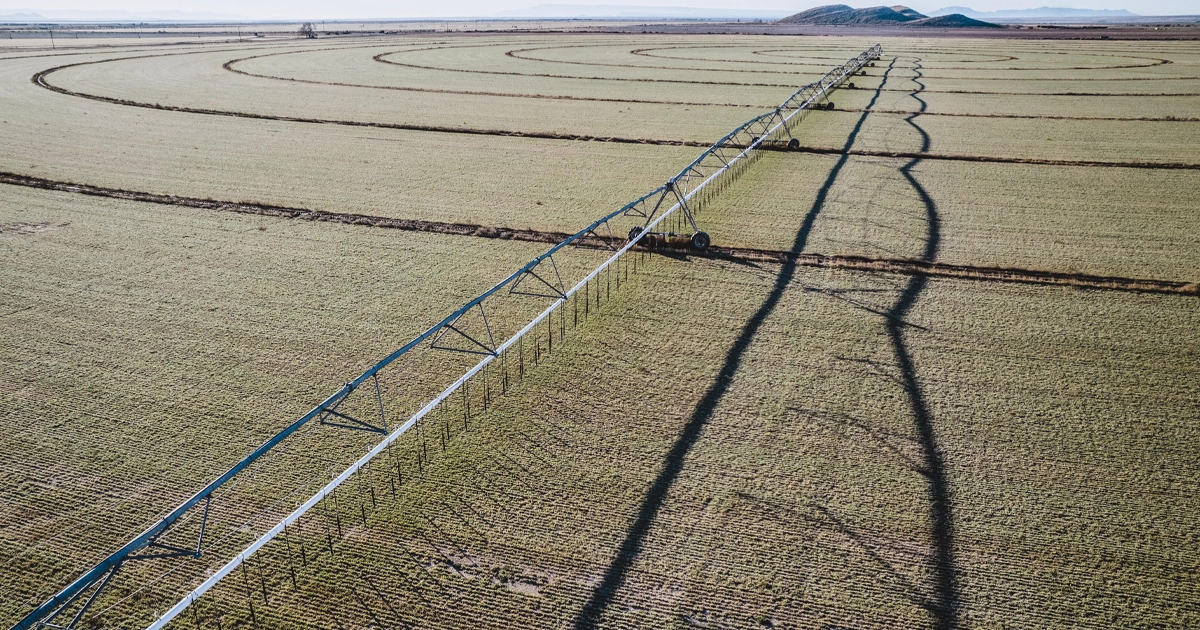
LR_WaterWars-CropCircle-03
RULE OF CAPTURE. The protracted legal battle over monetizing water rights in the Dell Valley hinged on age-old British common law.
It’s a familiar story: Big city needs water and is willing to pay for it. Property owners with extensive landholdings and abundant groundwater want to sell their water. Billionaires swoop in and buy surrounding acreage. Then, the local groundwater district redraws key boundaries restricting landowners’ ability to sell their water. Lawyers descend. Court battles ensue.
That’s the gist of the documentary film Water Wars, which has been screening at film festivals after debuting at the 2024 Dallas International Film Festival, where it won a grand jury prize. Directed by Mario Mattei, Water Wars is an engaging tale about an extremely complex issue.
Rule of Capture is a property right in Texas. If you own the land, you also own the water under your land. The landowner is able to capture all the water under their property. It’s theirs to do with as they please. That’s the theory, at least. But in Texas, a state that champions property rights, those rights are not as absolute as some landowners might think, and they come with all kinds of restrictions and limitations.

PIONEERING RANCHERS. Phil Guitar’s family began ranching in the Dell Valley long before its prodigious water resources were identified.
Guitar Ranch
Water Wars tells the story of Phil Guitar, a rancher whose properties are spread out across West Texas, including more than 30,000 acres in the Dell Valley. The valley surrounds Dell City, an isolated town of 245 that’s less than a square mile in size and is distinguished by the prettiest view of the Guadalupe Mountains, the highest range in Texas, as they rise majestically from the snow-white salt flats at their base. The view is especially scenic in the fall, with fields of red chiles ripening in the foreground.
That mountain range is now part of Guadalupe Mountains National Park. Similarly, Dell City and Dell Valley have changed over the years. Phil Guitar’s granddaddy started ranching in this high plain in the Chihuahuan Desert after buying up part of the historic Figure 2 Ranch during the Great Depression. He was an entrepreneur who recognized value in owning land. The expanse included a watering stop for the old Butterfield Overland Mail stagecoach service, which implied that a steady supply of water was available. Someday, there might be value in that, he thought.
The Lynch family, ably represented in the film by Laura Lynch, was a part of the next wave of immigrants to the Dell Valley: The farmers who moved in after geologists searching for oil found water instead in 1948. The Bone Spring-Victorio Peak Aquifer, 50 to 100 feet below the dry, rocky surface, contained a huge pool of water, most of it runoff from the Sacramento Mountains 100 miles north in southern New Mexico. So much water existed below the surface that when tapped, a well could produce more than 3,000 gallons a minute. With that much water, farmers could irrigate fields and grow crops, and the aquifer would recharge, filling up all over again.
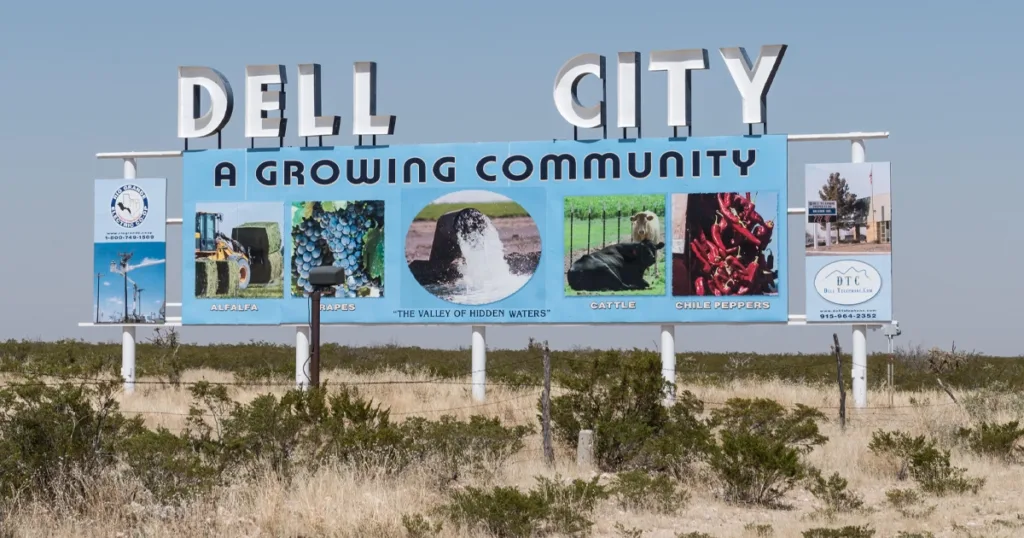
OASIS IN THE DESERT. In 1948, an ocean of water was discovered beneath this tiny town at the northern edge of the Chihuahuan Desert.
The Valley of Hidden Waters
Promoters declared Dell City “The Valley of the Hidden Waters,” and an influx of farmers responded. During the 1950s, enough cotton was farmed to keep six local cotton gins busy, including those owned by the Guitar family, who also had cottonseed oil mills and compresses. Alfalfa, chiles, melons, and onions were also cultivated.
Even with this sea of water, farming in the desert was a hit-or-miss proposition. In 1964, the end of the Bracero Program, which had brought millions of Mexican guest workers into the US labor pool, put many farmers out of business. In 1966, a torrential flood inundated Dell Valley, washing away crops and causing an estimated $4.3 million in damages. By the 1990s, Dell City had dwindled to just two cafes, a convenience store, a hardware store, and a bar. Ninety percent of the valley’s 40,000 acres of cropland was water-intensive alfalfa.
Meanwhile, approximately 90 miles west of the Dell Valley, the population of the El Paso-Juarez metropolitan area, which relies on the Rio Grande and the Hueco-Mesilla Bolsons Aquifer for drinking water, was approaching 2 million. A city utility, El Paso Water, went on the prowl for more dependable water and saw Dell Valley as a potential source.

THIRSTY METROPOLIS. The mission of the El Paso Water forced the agency to look far and wide for dependable water sources.
El Paso Water
For all their concerns that their big-city neighbor was out to steal their water, large Dell Valley landowners eventually reached a consensus: Pumping and shipping water to El Paso was potentially a lot more profitable than pumping water to their alfalfa and pepper fields.
On the other end of the proposition, Woody Hunt, El Paso’s most prominent developer, whose interests included pipeline construction, saw the writing on the wall and purchased 5,000 acres of farmland in the Dell Valley. Philip Anschutz, who ranks No. 88 on the 2024 Land Report 100, also started buying farmland in the Dell Valley. As a major investor in Union Pacific Railroad, Anschutz controlled a right-of-way crucial to the construction of a pipeline.
With the specter of a big water play, the board of Hudspeth County Underground Water Conservation District No. 1 voted that in order to determine how much water a landowner could export without impacting the aquifer, a landowner must have irrigated his acreage during a 10-year historical-use period from 1992 through 2002. Land that was not irrigated did not qualify. That restricted the Lynch family, who had put significant acreage into a government conservation program. It set up a classic battle pitting farmers against ranchers. Farmers pumped as much water as necessary to water their crops. Ranchers were far more conservative in their water use, utilizing stock tanks to provide water for their livestock, eschewing irrigation pumps. The district had effectively limited the Guitars’ and the Lynches’ opportunities to sell groundwater.
“Five percent of the property gets 95 percent of the water rights,” is how Jim Lynch put it.
The phrase water wars has a long history in the annals of the American West concurrent with its settlement by European immigrants two centuries ago. No matter where you go out West, water remains a contentious subject. There’s never enough.
Rule of Capture
As I watched the documentary film, I felt like the past 30 years of my life as a journalist were passing in front of me. I knew Dell City and the story of the Valley of the Hidden Waters and its future as a source of fresh water for the people of El Paso, 75 miles west. I recognized many of the characters in the film. And I knew about Rule of Capture.
My interest dated back to the mid-1980s, after I had become an avid swimmer at Barton Springs, a natural pool in Austin fed by artesian springs. I was visiting my friend Kirby Warnock at the Warnock homestead five miles east of Fort Stockton, a West Texas town that is a popular gas and rest stop along Interstate 10. On our way into Fort Stockton on a back road, I noticed sluice gates in the sandy scrub, concrete embankments, what appeared to be canals, and faint remnants of crop rows. What was up?
“There were 200 small truck farms out this way,” Kirby explained to me. “They were fed by Comanche Springs in town,” he said, referring to a historic gathering spot for Native Americans, Spanish explorers, and pioneering settlers that comprised the largest complex of artesian spring water in West Texas.
In 1955, landowners west of town, including Clayton Williams Sr., one of West Texas’s most distinguished civic leaders, drilled wells and installed diesel pumps to feed their crops and newly planted pecan orchards. After the irrigation got up to full speed, the springs stopped flowing for the first time in recorded history. The motorized pumps flooding alfalfa fields and pecan orchards were intercepting groundwater flowing from the Glass Mountains south of Fort Stockton toward Comanche Springs.
Comanche Springs
The truck farms east of town, and Fort Stockton’s biggest tourist attraction, the Comanche Springs swimming pool, soon dried up. Smaller landowners sued the irrigating farmers, but the Texas Supreme Court upheld Williams, et al’s rights to pump all the water they cared to pump, citing Rule of Capture. In Texas under Rule of Capture, the landowner owns the water under the surface. If the landowner can capture the water, they may do what they wish with it. Groundwater, the court ruled, was too “secret, occult, and concealed” to regulate.
Rule of Capture was established in England and adopted by Texas when it became a state back in the mid-19th century, when much of the Lone Star State meant the eastern, wetter half of present-day Texas. In the 21st century, Texas remains the only western state where Rule of Capture is a property right.
It seemed other greedy landowners could do what the pumpers did to Comanche Springs because groundwater transcended property lines.
Antelope Valley Ranch
In 1995, I attended a community meeting at St. Joseph’s Catholic Church in Fort Davis, a historic Texas mountain town, to gauge the potential impact. The small gathering included prominent area ranchers who had come to learn more about El Paso Water’s recent purchase of the 25,000-acre Antelope Valley Ranch between Marfa and Valentine. If El Paso was to continue growing, the city needed that groundwater.
There was a palpable fear among the ranchers at the Fort Davis meeting that El Paso Water threatened to drain them. Austin developer and attorney Richard Suttle explained what recourse they had, which wasn’t a whole lot.
“Up until tonight, I believed that the right to capture groundwater was an inalienable right,” a neighboring rancher, Chile Ridley, told me for a story I wrote for Texas Monthly. “But I have never been faced with this prospect. When something your neighbor does affects you, I say maybe we should look at the way things are currently designed. As property owners, we’re caretakers and stewards of the land. El Paso wouldn’t conserve it. I’m not at all clear what is the right thing. I’m just concerned about waking up some morning and not having water to drink.”
Another rancher close to Antelope Valley, Lynn Crittendon, added, “As a neighbor, I hope they act responsibly.”
Judge Lucius Bunton
In I997, I drove to Pecos to visit Judge Lucius Bunton. Four years earlier, Bunton made an exception to Rule of Capture in a decision that protected endangered species. Bunton mandated limits to how much water could be taken from the Edwards Aquifer, a vast groundwater complex that has long sustained San Antonio and surrounding communities.
Bunton’s decision led to the creation of the Edwards Aquifer Authority by the Texas Legislature and, indirectly, to Texas’s first comprehensive water plan.
“I’m not going to take credit for that,” Judge Bunton told me for a profile I wrote for Texas Monthly, “But I encouraged some years ago, long before this water bill and the aquifer authority, that the legislature do something. The state of Texas ought to do something. This is a step in the right direction.”
Bunton grew up on a hardscrabble Presidio County ranch located between Marfa and Presidio not far from the old Shafter silver mine. The judge allowed how Rule of Capture worked pretty well in the eastern half of the state. But in the part of Texas where he grew up, Rule of Capture was a direct threat: The biggest pump rules.
I had already visited Dell City, identified by a weathered billboard as The Valley of the Hidden Waters, where the shadow of El Paso loomed large.
Hudspeth County Herald
The Hudspeth County Herald had been covering the rural versus urban water issues extensively. One of Laura Lynch’s uncles, Jim Lynch, had been farming in the Dell Valley since 1950. He was a major landowner, and he was also in charge of the weekly Herald.
“My thinking is, if we have to give up our water, all of us should share in the money,” he told me. “If a few farmers sell out, they’ll make money, the water will diminish, and everyone else will have to go out of business without compensation.”
Lynch understood the dynamic well. “We all know El Paso is bigger than any of us, and if they choose to take this water, we don’t have the money collectively to fight them. Phil Anschutz is one of the wealthiest men in America. If he’s together with Hunt, there’s no stopping them,” Lynch said. The Lynch family eventually entered into a partnership with Anschutz.
State Water Plan
In 1997, the Texas Legislature, under the direction of Lieutenant Governor Bob Bullock, enacted Senate Bill 1, a 50-year “ground up” plan to provide for water in anticipation of Texas’s projected growth. The State Water Plan avoided directly addressing Rule of Capture — legislators and state leadership regarded the property right as sacrosanct and too hot to handle — and instead established 16 regional planning areas, each region charged with balancing rural and urban needs while championing creation of groundwater districts that could restrict water use in order to preserve the resource, subject to voter approval. The rub was that since the state did not provide budgets for the districts that were being created, most districts would be understaffed and underfinanced. A single lawsuit could gobble up a district’s annual budget.
Today in Texas, regardless of Rule of Capture, if the land you own is within a groundwater district, your groundwater use may be restricted (although that has rarely been the case). If the land you own is outside a groundwater district, you can use as much water as you can pump. And so can your neighbor, who may or may not have a bigger pump or intentions similar to yours.
Despite those efforts by the state, the Texas Supreme Court affirmed the right of Ozarka, the bottled-water company, to mine a spring in East Texas for commercial purposes, even though the mining caused neighbors’ wells to go dry.
Kinney County, about 125 miles west of San Antonio, was a vivid example of a local groundwater district trying to do the right thing minus finances. The district was challenged by a handful of landowners who wanted to sell and ship their groundwater to San Antonio, an idea that generated pushbacks from farmers and ranchers who wanted to continue to use their groundwater locally and feared a few greedy landowners would dry their wells.
Water marketers, legislators, attorneys, and lobbyists joined the fray, arguing over how much (if any) water could be pumped and sold outside the county without impacting springs, creeks, and streams inside the county. The argument led to accusations of mismanagement, ballooning legal fees, and groundwater district meetings being videotaped by landowners who wanted to sell water.
“Eight-tenths of one percent of county property is irrigated,” Kinney County judge Tully Shahan said, “and the irrigators are trying to tell us what to do with 100 percent of the water.” Darlene Shahan, Tully’s wife, was the general manager of the groundwater district.
T. Boone Pickens
T. Boone Pickens saw the potential in water as a commodity made possible by Rule of Capture. He organized landowners in the vicinity of his 65,000-acre Mesa Vista Ranch near Pampa in the Texas Panhandle to form a compact to sell water to thirsty cities. If landowners organized, they could avoid the contentious infighting in Kinney County.
I visited Pickens’ Mesa Vista Ranch, studied his plans, and wrote an article for Texas Monthly titled “Boone Pickens Wants to Sell You His Water.” Even though the amount of water that had already been pumped from the Ogallala Aquifer made irrigated farming no longer feasible in the Texas Panhandle, Pickens and his allies perceived value in pumping and shipping the precious commodity.
Ten years later, I ran into Pickens at an event in Dallas and reintroduced myself. His eyes narrowed in recognition.
“You cost me a lot of money,” he said acidly. “What happened?” I asked.
He told me how the compact he’d organized ended up having to sell its groundwater not to Dallas or to Fort Worth but to the Canadian River Municipal Water Authority that serves Amarillo, Lubbock, and other communities in the Texas Panhandle and the South Plains.
“At least you sold it to your neighbors,” I said, congratulating Pickens on doing the right thing.
50-Year Plan
In 2001, I spent a day in El Paso driving around the city with a water cop, looking for telltale signs of water spilling over the curbs of residences and businesses around town. I also took a meeting with Ed Archuleta, the longtime general manager of El Paso Water. Archuleta did his best to make the case that when it came to water, El Paso was the most conservation-focused city in the entire state.
Archuleta cited El Paso Water’s 50-year plan designed to meet the projected needs of 1.3 million people. Eight million gallons of treated wastewater were being recycled into El Paso’s Hueco-Mesilla Bolsons Aquifer each and every day. Rationing ordinances and rate increases had reduced overall demand by 20 percent. In addition, El Paso Water had a desalination plant that treated and cleaned 29 million gallons of brackish and otherwise undrinkable groundwater every day.
El Paso Water intended to secure its water responsibly. This wasn’t going to be another Chinatown where Noah Cross and other power players engineered the theft of water rights from Owens Valley farmers to build a new and better Los Angeles. If El Paso Water purchased faraway land for future use of the water beneath it, then it was imperative to continue farming on that ground as long as it was economically feasible.
Dell Valley landowners did their homework and got on the same page. The science was clear. Fifty-thousand acre-feet of water could be pumped annually, and the aquifer could still fully recharge.
Unlike most modern water stories, this one had a happy ending for the landowners — with a couple of caveats.
Phil Guitar, whose right to use the water beneath his property had been restricted by the board of Hudspeth County Underground Water Conservation District No. 1, appealed his case all the way to the Texas Supreme Court — and won. Guitar’s argument boiled down to the definition of the word “use.”
Then Guitar met with the ground-water district and helped rewrite its rules. He was then able to drill test wells on his land to prove up the groundwater so a deal with El Paso Water could be cut to the satisfaction of both parties.
$222 Million in Water Purchases
The Lynches, who were also fighting the groundwater district, sold their 26,470-acre CL Ranch for $50 million in 2016. Phil Anschutz and Woody Hunt got a healthy return on investment when Anschutz’s 16,000-acre CLM Ranch also sold in 2016 for $66 million.
El Paso Water has spent more than $222 million buying 20 properties and now owns 70,000 acres of the Dell Valley, along with necessary permits to pump the water. The requisite pipeline due west to El Paso has yet to be constructed. Meanwhile, the utility has sustained the farming tradition in the Dell Valley, leasing 50,000 acres to farmers growing alfalfa and chiles. A young farmer can now break into the business in Dell Valley without owning any land.
El Paso Water’s deal with Dell Valley landowners led to the sale of the 40,000-acre Antelope Valley Ranch between Valentine and Marfa for $6 million in 2024, a tidy profit from the initial $1.5 million investment in 1995, according to Denise Parra of El Paso Water. The 150-mile pipeline from Antelope Valley to El Paso was projected to cost at least $470 million, far too expensive for the utility.
Keep an eye out for Water Wars in 2025. Think of it as a direct descendant of Jack Schaefer’s classic Shane, pitting farmers against ranchers in the New West. After screening Water Wars, I called Philip Guitar, one of the film’s producers and the son of the plaintiff in the aforementioned Texas Supreme Court case. One of my principal questions revolved around the standard story structure of a Western: Who wore the white hats and who wore the black hats?
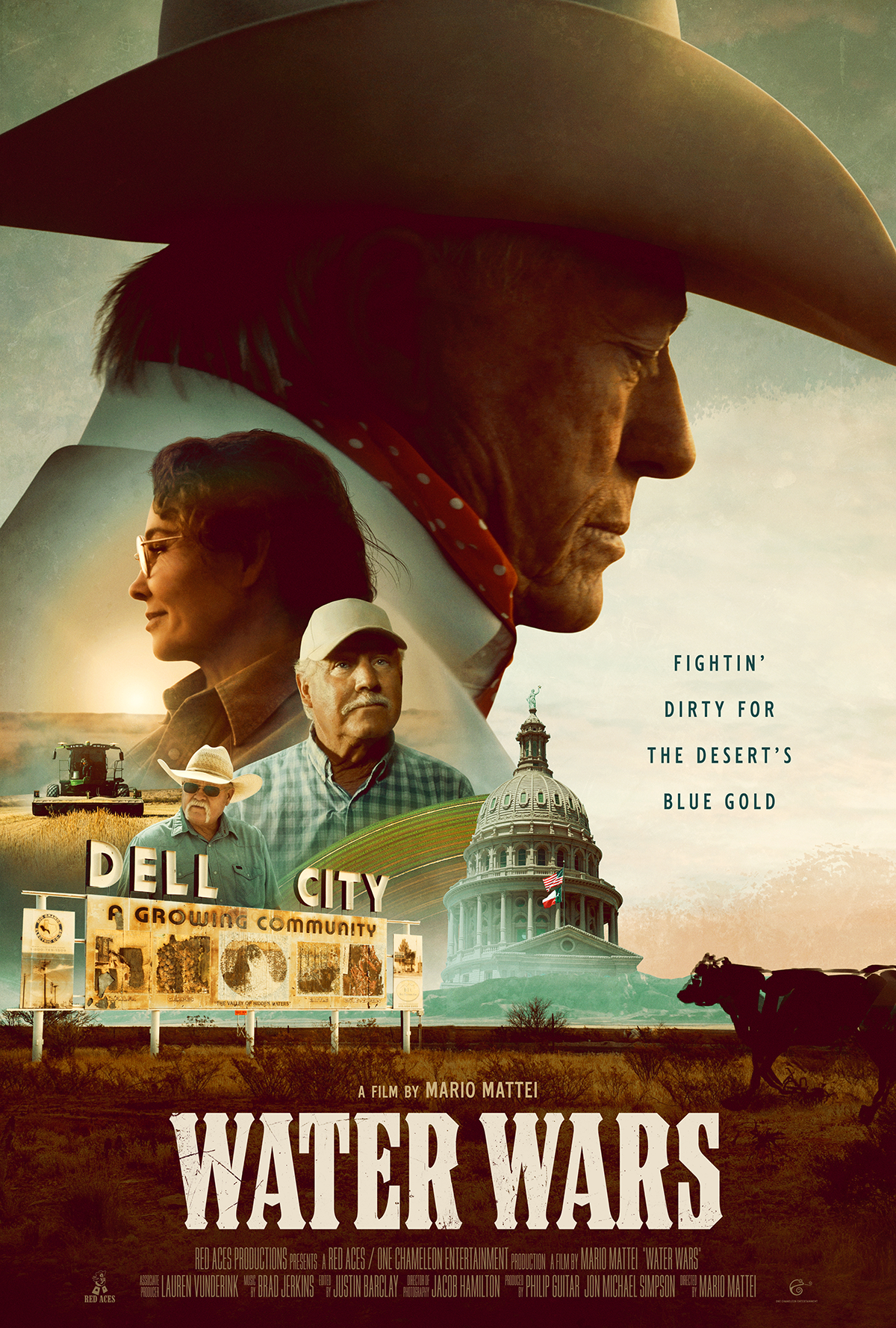
THE LAST CAST MEMBER. In March 2025, the compelling voice of native Houstonian Dennis Quaid was added as the narrator of Water Wars.
Takeaways
“This is lined up for the viewer to determine who the bad guy is,” Philip said. “I’m not saying who the antagonist is. I’m not saying who the protagonist is. We are putting it out there for you to determine what you think. You figure out who you think it is. Maybe you think the antagonist is Phil Guitar. Maybe you think the antagonist is Phil Anschutz or Woody Hunt. Maybe you think the antagonist is El Paso Water.”
The board of the Hudspeth County Underground Water Conservation District definitely did not emerge unscathed. In the film, Laura Lynch noted that one board member shot a man twice and did time for another offense.
“What was the takeaway for landowners?” I asked Philip. “What did he want the film’s audience to think about?”
“Be aware of potential consequences that lie ahead,” Philip said. “It doesn’t matter if you have one acre or 10,000 acres. If you’re a landowner in Texas, you should look and ask, ‘Am I in a groundwater district?’ And if you are, ‘What are the rules of that district?’ It’s not a bad idea to get involved and see what your groundwater district is up to, what they’re doing, and what the laws are.
“You may think because it’s Rule of Capture, you’ve got the right to do anything you want with your water. And in most situations, you should. Our ruling helped usher in the idea that all landowners should be treated fairly and equitably. But these districts can be autonomous. They make their own rules. They need to be double-checked to make sure all landowners are being treated equitably.”
“And, if your land isn’t within the boundaries of a groundwater district, it helps to know about your neighbor’s use of groundwater and if their intent squares with yours,” I added.
“You could be drained dry,” Philip said.
There’s a bitter postscript to Water Wars. In 2023, after production on the documentary had wrapped, Laura Lynch, 65, was killed in a head-on collision on Highway 62 between Dell City and El Paso three days before Christmas. The photogenic grandmother was the voice of post-ag Dell City, buying derelict buildings and converting them into Airbnbs that catered to tourists visiting Guadalupe Mountains National Park.
It takes a special person to love a little town like Dell City. That was Laura.
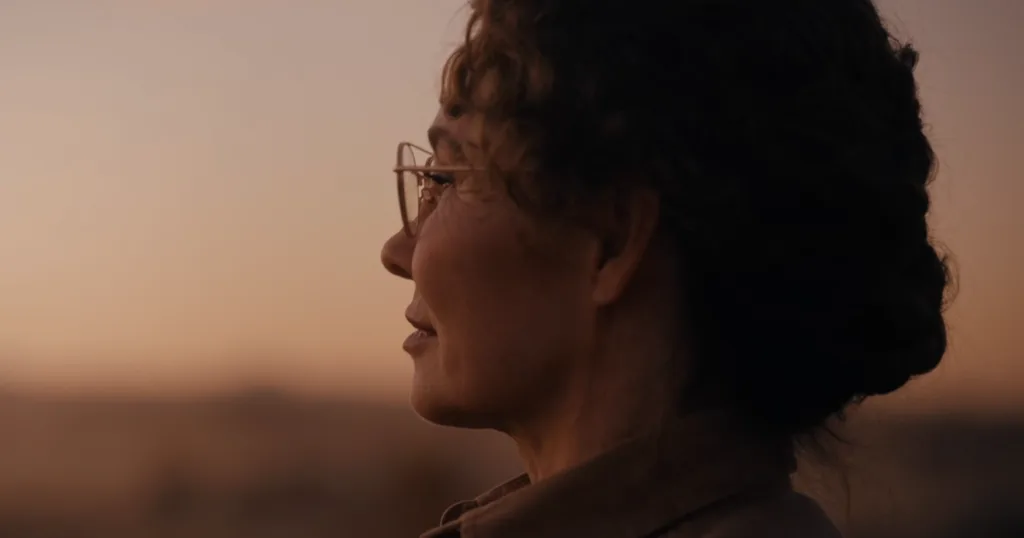
TRAGIC LOSS. A founding member of the Dixie Chicks, Dell City native Laura Lynch was killed in a head-on collision after production wrapped.


